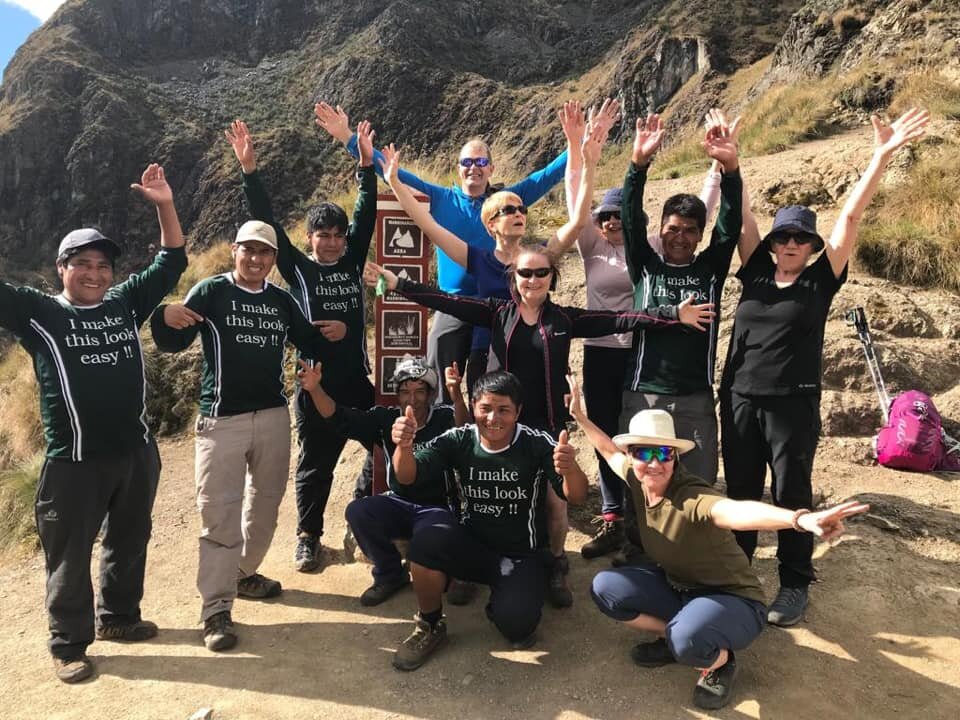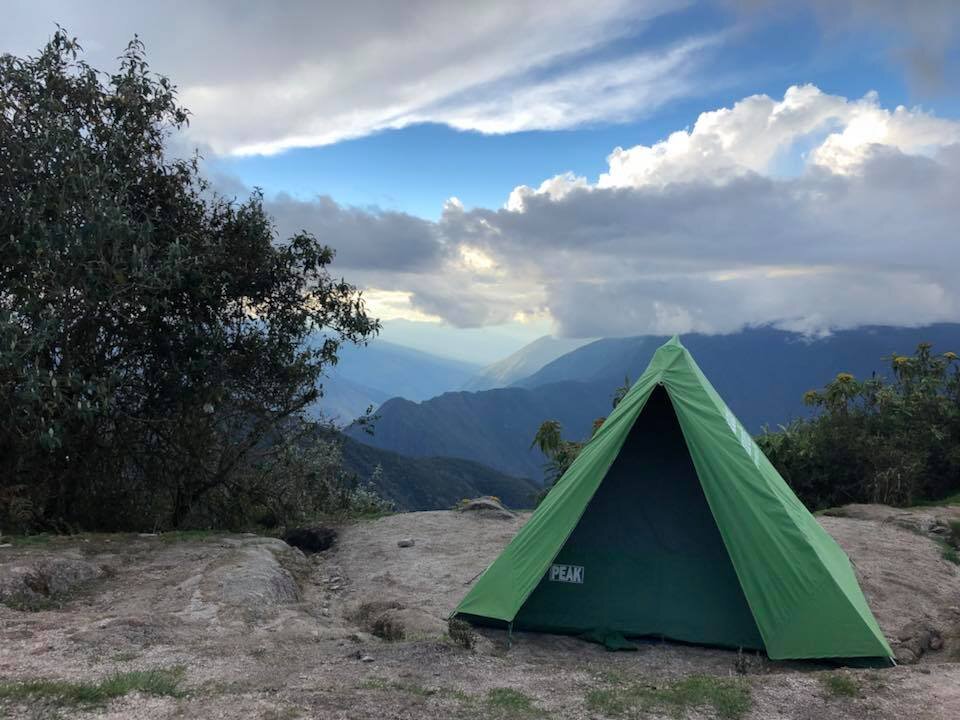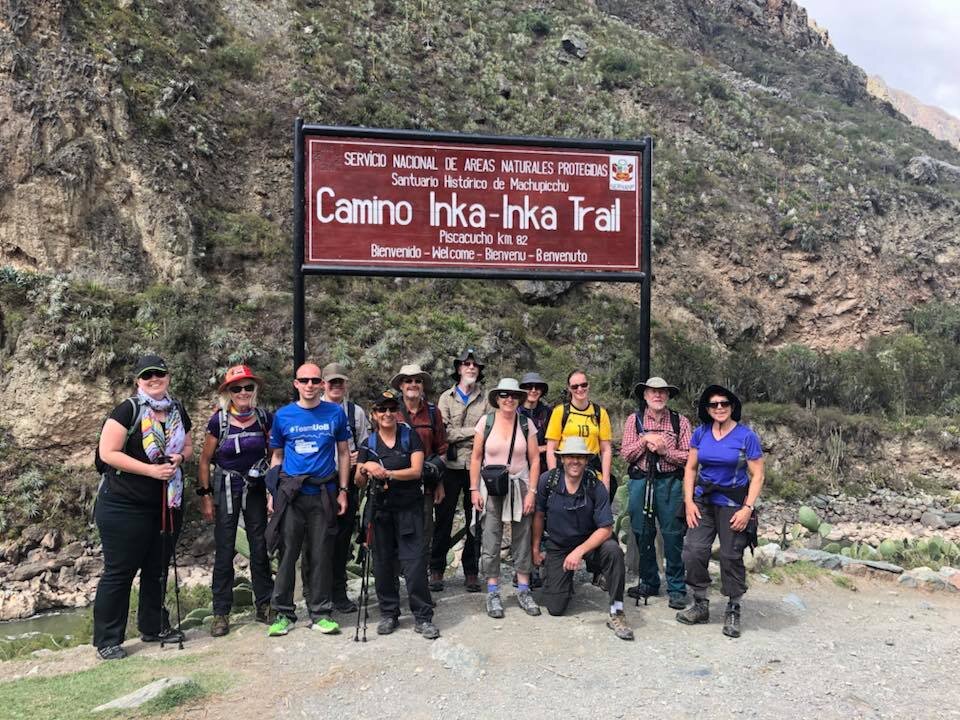Inca Trail Info and Availability
Anyone over 12 years old with at least a moderate level of fitness and health, and a valid passport and permit can hike the Inca Trail. Below you’ll find more information and the latest availability.
Current Inca Trail availability
| March | April | May | June | July |
|---|---|---|---|---|
| AVAILABLE | AVAILABLE | AVAILABLE | AVAILABLE | AVAILABLE |
| August | September | October | November | December |
| AVAILABLE | AVAILABLE | AVAILABLE | AVAILABLE | AVAILABLE |
2023 Inca Trail Permits are available, get in touch to start planning! Alternative treks to Machu Picchu are always available.
2024: Inca Trail permits not yet on sale, sign up to our newsletter below to be informed as soon as they become available, usually from October! All treks that are booked to hike in February will be automatically booked to hike the Inca Quarry Trail as the Inca Trail is closed for restoration efforts (unless you choose a different alternative trek).
- Inca Quarry Trail
- Salkantay Trek
- Lares Trek
When is the best time to hike the Inca Trail?
Read our blog post for our recommendation and a month by month summary!
Which trek to Machu Picchu is the best?
There are 2 official Inca Trails: the 4 day, 3 night Classic Inca Trail and the 2 day, 1 night Short Inca Trail. The latter is just a shorter, faster route on the same Inca Trail (you avoid the most challenging hike on day 2 and won’t be camping). In February, these trails are closed for maintenance.
Permits are limited and tend to sell out fast, we would recommend booking 4-6 months in advance. There are a number of alternative treks that lead to Machu Picchu like the Inca Quarry Trail, Salkantay trek and Lares trek that are also worth-while hikes in their own right. Choosing a trek really depends on your preferences (and permit availability), feel free to contact us to discuss!
DO I NEED A PERMIT TO HIKE THE INCA TRAIL?
Yes, only 500 people (200 tourists and 300 guides/porters) are allowed to begin the Inca Trail each day. You can only hike these trails with an authorized guide and permit. Permits are issued on a first come, first serve basis, are non-refundable and non-transferable, and all booking information must match your passport - this is to avoid agencies booking slots in high season with fake information and changing the names later.
This is also the reason why they tend to sell out fast, if you have certain dates in mind it’s best to book as soon as possible to guarantee your permits. We recommend booking 4-6 months in advance.
How long and difficult is the hike ON THE INCA TRAIL?
The whole Inca Trail is the length of a marathon, 42km, covered over 4 days and 3 nights. It really is a beautiful trail in the cloud forest with incomparable views of the Andes mountains and lush valleys, so we recommend not to rush through but to take your time and enjoy your surroundings. It’s all about the journey, not the destination! We make plenty of stops for pictures, snacks, and visiting the Inca ruins along our path. On average, we will hike about 6 to 8 hours each day.
We would give it a difficulty rating of 3/5 - moderately difficult - depending on your fitness level. This is also taking into account the many steps, the varying temperatures during the hike (it can get very cold at night), and the altitude that will have its effects on everyone - no matter your age or fitness level. Our guides are very experienced - they will help, advise and motivate you along the way, and have the necessary first aid kits and training. Using walking sticks is highly recommended, to help your knees and keep your balance, you can rent these from us.
Should I worry about altitude sickness?
The highest point of the Inca Trail is at 4,200m above the sea level, and you will spend the night at the campsite at 3,600m. It is difficult to say if you are really going to suffer from altitude sickness, everyone reacts differently. Most hikers don’t have any serious issues, and successfully complete the trail. When you arrive in Cusco, we recommend taking it easy for two days and not drinking alcohol in order to acclimatize. Drinking plenty of water and chewing cocoa leaves will also help you prepare. If you have any concerns, please address them with your tour leader who can advise you.
WHAT IS PROVIDED ON THE INCA TRAIL? WHAT IS THE CAMPING LIKE?
We will give you a duffel bag in advance that can take up to 6kg of your personal items including sleeping bag. You won’t have to carry this yourself, we have a team of porters who will carry the duffel bags as well as all the tents, camping equipment, food and water (all included). Please only take essential items for your hike, leave the rest at your hotel. Check our FAQ: recommended packing list. The only thing you will carry yourself is a day pack with necessities like sun protection, camera, snacks, water, etc. A sleepings bag and walking sticks you can rent from us.
There’s a full service at the camping sites, meaning that the porters will be setting up and breaking down the tents, toilets, while our cooks will prepare and serve you breakfast, lunch and dinner. You can expect to be fed well, including rice, chicken, fresh fruits, vegetables, for breakfast oat meal, eggs and bread. We can accommodate dietary requirements, if you notify us in advance. You’ll even be given a bowl of hot water every morning - but there are no showers. Drinking water is provided, so bring a refillable water bottle. Keep in mind that it can get very cold at night, in winter (May-September) temperatures may drop below freezing point.
Should I tip guides and porters?
At the end of the trek, we hope you’ll agree that every single crew member deserves a tip for their hard work - this isn’t mandatory but it is customary. Your guide will help you work out the appropriate amounts and splits (check our tip suggestions in the FAQ).
“What can I say? this trip was the trip of a lifetime. One of my friends set up the trip on the glowing recommendation of a friend and his friend was right. This was my first trip outside the US and it was amazing. Mike couldn’t lead the hike but he sent us Henry in his place. Henry was a wealth of knowledge and he is fluent in Spanish, English, and Quechua.
The thing that impressed me the most was that the full service and everything was thought of and taken care of 100%. On the hike the porters were amazing and the chef cooked amazing meals on a two burner camping stove. You won’t go hungry on this hike!
This company is the best. When I saw how everything was taken care of and we only had to hike and not worry about getting a taxi or finding places to stay or things to do I think we got a real bargain. I can highly recommend this tour company and all it’s employees will work hard to make your trip go smoothly and it will be an awesome experience.”










